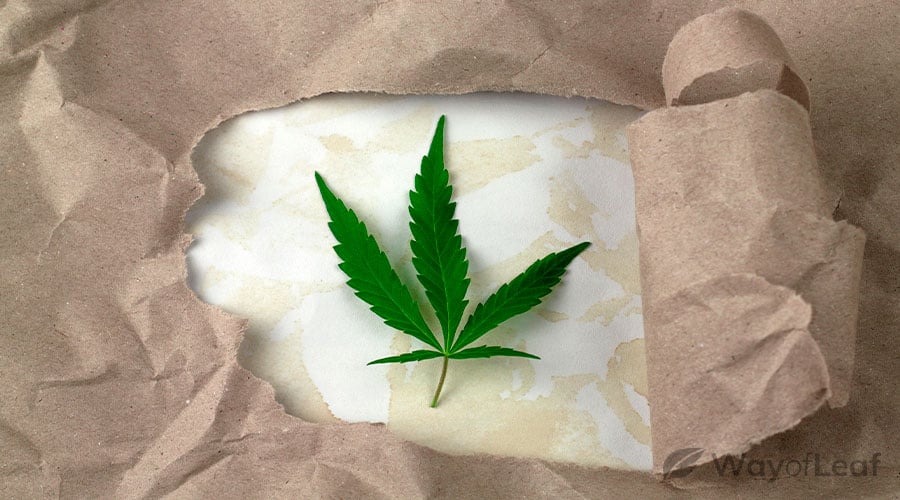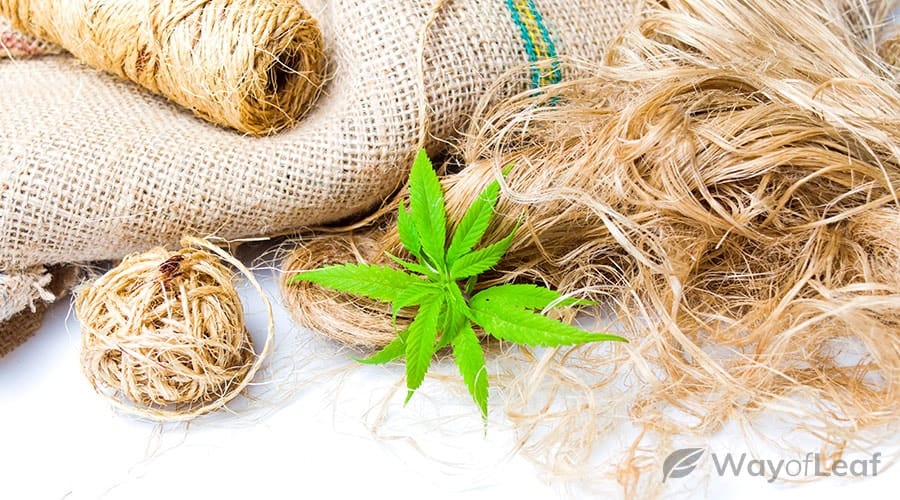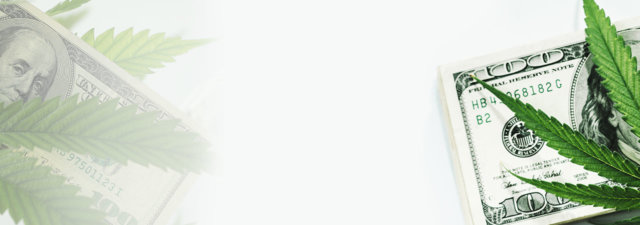There are a myriad of benefits we have enjoyed as an ‘advanced’ civilization. However, the human race, as a whole, continues to make mistakes. Our continuing prohibition of hemp was a prime example.
Fortunately, common sense prevailed for once with the passing of the Hemp Farming Act of 2018. It removed hemp from the Schedule I status afforded to drugs such as heroin under the Controlled Substances Act.
Simply put, we have wasted a tremendous opportunity over the years. Hemp is an exceptionally versatile plant with a wide array of uses. This article outlines six ways in which ancient people used their hemp crops. Perhaps it is high time we revived these processes!
A Brief History of Hemp
Estimates vary as to how long human civilization has used hemp. The span of recorded history is approximately 5,000 years, although ‘modern’ humans probably spread from Africa into Asia and Europe 60,000 years ago. Our species had colonized most of the ice-free parts of the world by 10,000 BC.

According to E.L. Abel’s Marihuana: The First Twelve Thousand Years, evidence of man’s usage of cannabis goes back at least 10,000 years in Taiwan. However, a hemp rope was found in the modern-day Czech Republic in 1997, dating to 26,900 BC.
Most claims suggest that humankind has used hemp for 12,000 years. However, archaeological evidence suggests that we may have used hemp for over 29,000 years!
The Taiwanese discovery consisted of broken pieces of pottery with twisted strands of hemp fiber used to decorate them.
Meanwhile, in 1972, an ancient burial site dating to the Chou Dynasty of 1122-249 BC was discovered. Archaeologists found cloth made from hemp, believed to be the oldest preserved specimen of hemp clothing located at the time. However, excavators have since discovered a piece of hemp cloth in modern-day Iran and Iraq (ancient Mesopotamia). They believe it is around 10,000 years old!
The Shu King, a book that’s over 4,000 years old, mentions hemp when describing the province of Shantung.
From there, hemp began to spread across the world, as shown in this timeline:
- 2000 – 800 BC: In the Hindu sacred text (Atharvaveda), hemp is described as ‘sacred grass’ and is considered one of India’s five sacred plants.
- 600 – 100 BC: Hemp spreads into Europe, probably beginning in Russia then spreading to Greece, Germany, and Britain.
- 105 BC: In China, Ts’ai Lun is accredited with inventing hemp paper.
- 850: The Vikings bring hemp to Iceland.
- 900: Hemp becomes popular in the Arabic world.
Hemp in the Middle Ages
In 1535, King Henry VIII of England passed an act. It decreed that all landowners had to sow a minimum of 0.25 acres of hemp or face a hefty fine! Fast forward to the early 1600s, and the residents of Jamestown, the first permanent English settlement in North America, began using hemp to make ropes and clothing. In 1632, the Virginia Assembly decreed that all planters were obliged to plant hemp; such was its importance!
In 1776, America’s Founding Fathers wrote several drafts of the Declaration of Independence on hemp paper. Both Thomas Jefferson and George Washington were hemp growers too. There are even reports that Abraham Lincoln used hemp seed oil to fuel lamps in his house in the 1840s.
Prohibition & Beyond
After thousands of years of uninterrupted usage and cultivation, the hemp industry’s growth came to a shuddering halt in the 20th century.
Despite USDA reports that showed hemp produced far more paper than trees per acre planted in 1916, the United States banned the crop via the 1937 Marihuana Tax Act. The World War II ‘Hemp for Victory’ program led to a brief revival of cultivation. However, the hemp planted by farmers in Wisconsin in 1957 was the last planted legally in the United States for over half a century.
In 2007, two North Dakotan farmers received hemp licenses, and seven years later, the 2014 Farm Bill allowed research institutions to begin pilot hemp cultivation programs. The big breakthrough came in 2018, however. An updated Farm Bill removed hemp from the list of Controlled Substances. Within three years, every American state agreed to permit the growth of hemp amongst farmers with the requisite licenses.
Today, the hemp industry has finally become the billion-dollar phenomenon predicted by Popular Mechanics in 1938.
1 – Clothing
Hemp was probably the first plant cultivated for textile fiber. Ancient peoples learned that twisted strands of hemp fiber were stronger than individual strands. The Chinese perfected the art of spinning fibers into fabric. This innovation ended the need for animal skins as clothing.
It is no surprise to learn that the Chinese chose hemp as their material to make clothes. The Chinese text “Book of Rites” (second century BC) said that mourners must wear clothing made from hemp fabric out of respect for the dead!

It is a tribute to the strength of hemp that the Chinese also used it to manufacture shoes. The plant gained a foothold in Chinese culture to the point where China became known as the ‘land of mulberry and hemp.’ Silkworms fed on the revered mulberry plant and created valuable silk material. However, it was too expensive for most people, so they used hemp instead.
It isn’t difficult to understand why ancient cultures used hemp fibers to make clothes. It is lightweight, absorbent, and inexpensive. Also, hemp possesses three times the tensile strength of cotton.
Cotton Supplants Hemp
The earliest settlers in colonial America also used hemp to make clothes. By the end of the American Revolution in 1783, Virginia alone produced over 5,000 tons of hemp per annum.
Hemp remained the #1 choice for clothing until Eli Whitney invented the Cotton Gin in 1793. The device was able to pull out the seeds from the cotton bolls. As a result, cotton became the most popular option. This was mainly because farmers could grow it on land devoid of nutrients. Cotton became a cash crop by the middle of the 19th century, and hemp began its slow descent into prohibited status.
Perhaps we will see a revival of hemp clothing. After all, hemp farming uses half as much water as cotton and doesn’t need chemical pesticides or fertilizers. Fibers made from the plant are lightweight, durable, inexpensive to produce, and create comfortable clothing.
2 – Rope
As we mentioned in the introduction, humans used hemp to make rope at least 29,000 years ago. There is evidence of hemp being used as rope dotted throughout history. The mighty Vikings took hemp rope (and seeds) to Iceland during the middle of the ninth century AD. There is also evidence that Italian ships began using hemp rope as early as the tenth century AD.
We have used numerous materials to create rope throughout history. However, many of them were susceptible to rot when exposed to seawater. Hemp became a crucial material during the age of exploration. Typically, ships have miles of rope, with different pieces involved in various ship functions.
One issue with hemp rope is that it could rot from the inside. In the past, safety checks were not as commonplace as they are now. As a result, hemp ropes snapping was a danger if they remained unchecked.
3 – Food
Ancient civilizations may not have understood the minutiae of hemp’s nutritional value. Nonetheless, they soon became aware that they could eat the plant’s seeds raw, cooked, roasted, or even ground into a powder.
Every canton in China grew hemp. It was just behind millet, rice, vegetables, and orchards in order of importance. Hemp became a significant crop during the Middle Ages and was used to satisfy the growing population’s fiber and food needs.
Some companies still sell the edible seeds of the hemp plant. These seeds have a mild, nutty flavor and make milk, oil, cheese, and protein powder.
Hemp seeds are regaining their popularity, but the Chinese were consuming them thousands of years ago.
Hemp seeds contain many nutrients, including protein, potassium, zinc, magnesium, calcium, iron, and phosphorus. They provide a reasonable amount of vitamins A, C, E, and a handful of B vitamins. Also, hemp seeds contain the ideal ratio of omega-3 and omega-6 fatty acids.
These days, there are hemp food products everywhere! Brands such as Good Hemp, Nutiva, and Navitas sell a wide variety of edible hemp items. Please note that these products come from hemp seeds and contain practically zero CBD. However, Good Hemp offers CBD protein to go along with its Pure Hemp Protein, which contains 20 amino acids.
You can also smoke hemp joints, as long as they come from the plant and contain less than 0.3% THC. Premium Jane has a range of pre-rolls contains 45 mg of CBD apiece and could help you feel the benefits of hemp within minutes.
4 – Paper
The Chinese are responsible for an incalculable number of significant inventions. However, paper is unquestionably one of the most crucial. Chinese legend states that an unimportant court official named Ts’ai Lun invented the paper-making process in 105 AD.
Previously, the Chinese had to write on bamboo slips and wooden tablets. Painting on silk tablets with brushes was one alternative, but it was costly. The precise details surrounding the invention are unclear. However, we know that Lun used crushed hemp fibers and mulberry tree bark and smashed them into a pulp.
He placed the mixture in water. When the fibers rose to the top, they were tangled together. Lun removed pieces of the debris and placed them into a mold. Once the material dried, Lun formed the fiber into sheets.
Hemp Paper Around the World
The Chinese hid the secret for centuries. It was their rivals Japan who finally uncovered it in the fifth century AD.
Eventually, the Arabs learned the secret from the Chinese prisoners they captured after the Battle of Talas in 751 AD. Samarkand was the scene of the first paper mill in the Islamic world. By the 12th century, paper mills were functioning in Moor-occupied Spain.
Throughout history, humans used hemp paper for historical purposes. For example, Gutenberg’s Bible and the Declaration of Independence drafts were probably written on hemp paper.
In 1916, Lyster Hoxie Dewey and Jason L. Merrill of the United States Department of Agriculture made paper from hemp pulp. They concluded that it was a better option than wood. Even so, we have continued to cut down trees to make paper despite the inefficiency and consequences.
As well as producing more fiber per acre than trees, a hemp crop grows in a matter of months. As a result, we benefit from 2-3 harvests a year, rather than waiting years for trees to grow.
Perhaps climate change and the negative impacts of deforestation may ensure we revert to using hemp as our paper source.
5 – Religious Ceremonies
Bhang is an edible concoction created from cannabis flowers and leaves mixed with yogurt, water, spices, and milk. In India, it was analogous to alcohol use in the West today. Bhang was a pivotal part of social and religious occasions in ancient India. Ancient peoples believed that without bhang at festivities such as wedding ceremonies, evil spirits would come to the happy couple and ruin their lives!
The plant was also a significant part of the Tantric religion, which evolved out of Tibet in the seventh century AD. Three people known for using industrial levels of marijuana founded the first Taoist monastery. In China, some people still worship a ‘hemp goddess’ known as Ma Gu. In the modern age, Rastafarianism places great importance on cannabis use.
Furthermore, in the fifth century BC, the Greek historian Herodotus wrote about the funeral rites of the Scythians. He said that they placed cannabis seeds on red-hot stones and inhaled the vapor. Herodotus said the vapor ‘transported’ the Scythians, who began to shout and dance around the fire.
6 – Building Material
One of the most interesting uses of hemp is as a building material. Hempcrete involves using the wooden core of the hemp plant to create a material that resembles concrete. Making it involves mixing the wood with a lime binder and water. A chemical reaction between the latter two ingredients allows the hempcrete to bind together.
It is a material used by humans for thousands of years and is widely regarded as an excellent insulator for roofs, floors, and walls. Hempcrete is sustainable, lightweight, non-toxic, fireproof, and breathable.
While concrete accounts for 8% of human-generated CO2 emissions each year, hempcrete sequesters it.
There is a suggestion that the Ancient Egyptians used hempcrete in the pyramids. Hemp mortar was discovered on bridges created by the Merovingians in 6th century France. Historians strongly believe that the Romans used hemp fiber to reinforce mortar on their buildings.
Admittedly, one can’t use hempcrete to build an entire house. It simply isn’t strong enough to hold up load-bearing walls. However, it is becoming increasingly possible to use hempcrete to create a significant proportion of a dwelling.
Overall, hempcrete is a ‘green’ building material. While concrete accounts for 8% of human-generated CO2 emissions each year, hempcrete sequesters it, significantly reducing your carbon footprint.
Final Thoughts on Historical Uses of Hemp
Hemp was a cornerstone of human civilization for millennia. It is only in recent times that we have outlawed it. Hemp is a remarkably versatile plant capable of creating strong fibers, clothing, and paper, not to mention reinforcing buildings. It remains part of religious ceremonies around the globe, and its seeds are highly nutritious.
In simple terms, hemp is the future of agriculture. The 2018 Farm Bill legalized its growth in the United States. At present, most farmers grow hemp for the CBD industry. However, we should also take advantage of hemp’s other 25,000+ uses.
We passionately believe that hemp, in particular, should be used in paper-making once again. It is an environmentally-friendly alternative to chopping down trees.

![Which Country Smokes the Most Marijuana? [Revealed]](https://wayofleaf.com/wp-content/uploads/2020/06/wol_which_country_smokes_the_most_marijuana_1920x450-640x225.jpg)


![Why Does Weed Seem to Slow Down Time? [EXPLAINED!]](https://wayofleaf.com/wp-content/uploads/2019/04/wol_why-does-weed-slow-down-time-640x225.jpg)



![How to Read CBD Third Party Lab Reports [Simply Explained…]](https://wayofleaf.com/wp-content/uploads/2019/05/wol_1920x450-13-640x225.jpg)



